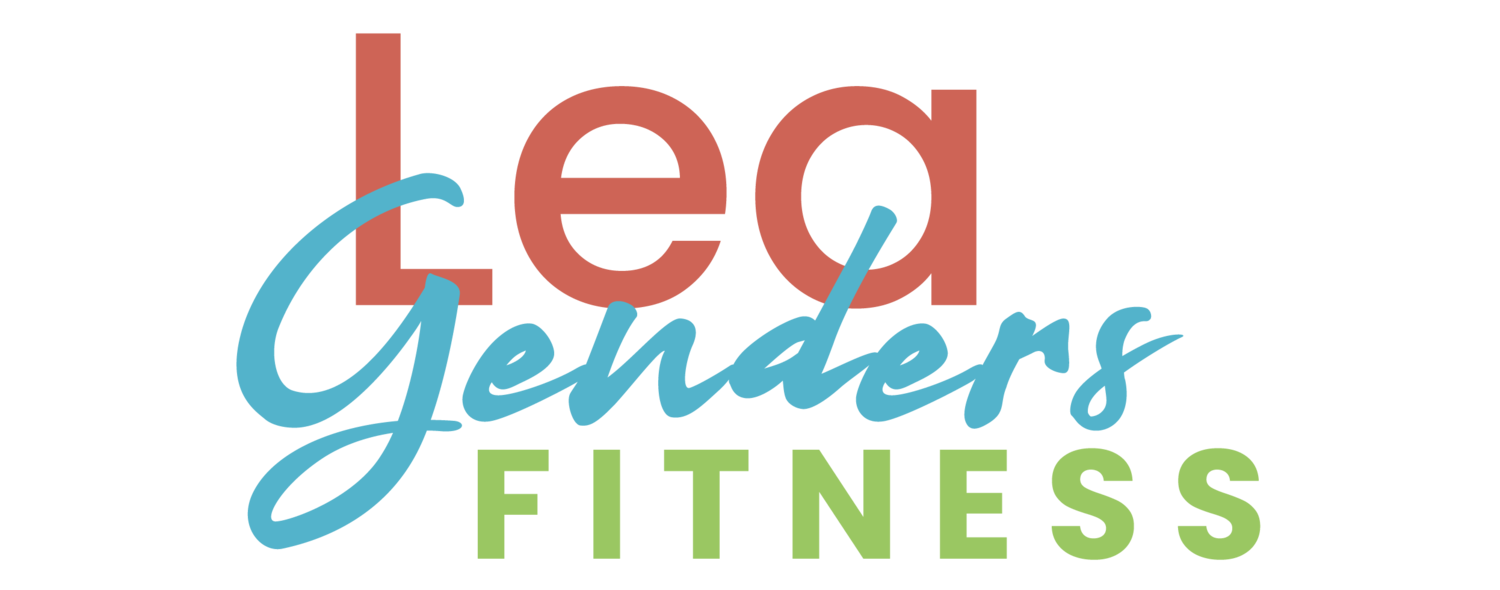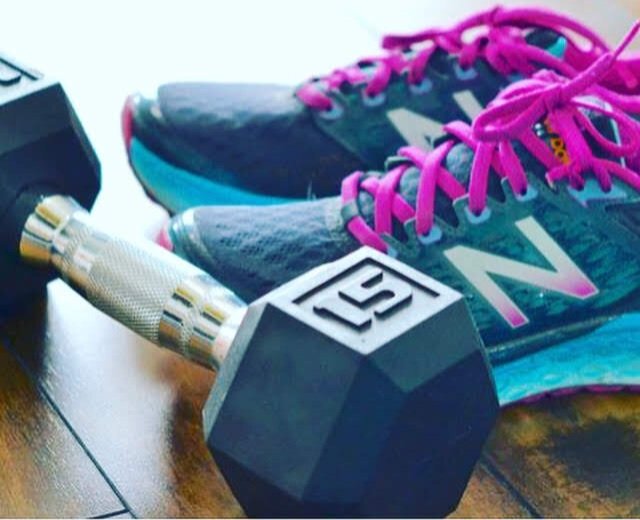As a healthy habits nutrition coach it is my job to help regular people find ways to fit healthy eating habits into their everyday lives. I don't work with fitness models or stage competitors.
I work with people who are looking for long-term sustainable weight loss and optimal health. That means no strict diets, no calorie counting and no meal plans from me. (There is nothing inherently wrong with these and there is a place for them for some people. I have just found that most people do best by starting with building healthy habits.)
I help regular people with families, kids, careers, responsibilities, friends, pets and hobbies (you know, a life) fit healthier eating into their already busy lives. We don't try to change our whole lives around to live healthier, we find ways to make healthier choices that work inside our already hectic lives.
Our goal is to always look, feel and perform our best through nutrition and movement. If you look great but feel like crap, there's something not right. If you look great but perform poorly, there's still work to do. If you don't look like you want and you also feel bad, the good news is that you can start today to implement some healthy habits that will help you start to improve in all areas right away.
There is no best one diet or workout plan that works for everyone. It often takes some experimenting and evaluating to find out what works best for you. However, there are some basics that are often overlooked when people are too busy looking for the next quick fix. One thing you can start to implement right away is to eat the recommended five to nine servings of fruits and vegetables a day. If you are eating considerably less than this, then start with one serving at each meal and build slowly over time. Baby steps, baby!
Eat fruits and vegetables to get the fiber that you need to feel full at meals and keep your digestive tract running...err...smoothly. Fruits and vegetables are high in nutrients and low in calories so you get more bang for your nutritional buck. A diet full of fruits and vegetables may help reduce risk of heart disease and high blood pressure. Fruits and vegetables are rich in vitamins and minerals so that you shine from the inside out. Not to mention fruit and vegetables are delicious. What's not to love about all of that?
This post is sponsored by Shine Organics. All opinions are my own. If I hated it, I'd tell you. This post contains affiliate links, that means if you click on a link, I get paid with no cost to you. No one is getting rich here, it just helps with the running (pun intended) of this blog so that I can continue to provide valuable free content. Thanks, as always, for your support.
HOW TO EAT MORE FRUITS AND VEGETABLES
PREP VEGGIES IN ADVANCE AND TOSS THEM INTO MEALS/SNACKS ALL DAY
How long does it take to cut seven slices of a cucumber to put in your salad for one day? How much longer does it take to just chop up the whole cucumber and put the unused slices in food storage containers and save for later? Minutes? Seconds? Not long. Same goes for peppers, onions, carrots and fresh spinach. Go ahead and wash and chop it all up in one day and put it away for later. You can toss veggies in your scrambled eggs in the morning, into your lunch salad and your stir fry or crock pot dinner. You can bag it up and take it with you for a healthy snack on the go. Taking a little time on the front end can save a lot of time during the week. If fruits and veggies are easy to grab, already washed and prepared, you're more likely to eat them.
HAVE FRESH FRUIT ON HAND AT HOME AND ON THE ROAD
Don't play hide the fruit. Buy a fancy fruit bowl for the dining room table and fill that baby up with all your favorite delicious fruits. If healthy fresh food is within arm's reach you're more likely to grab it when you're hungry for a snack. Make fruit and veggies convenient and unhealthy snacks very inconvenient (meaning leave them at the store. haha). You're more likely to eat what is easily accessible. Use laziness to your advantage. Do you really want to get in your car and drive to the store at 9PM to buy some chips or will you just eat that delicious orange in your pretty new fruit bowl?
JOIN A LOCAL VEGETABLE CO-OP OR CSA
Join a local vegetable co-op or CSA to try a variety of locally grown fruits and vegetables. You support local farmers while getting an opportunity to try different types of vegetables maybe you normally wouldn't buy. Variety is a huge factor in ensuring we are getting all of our vitamin and mineral needs. In Texas (and other states) we have Bountiful Baskets. Do some reasearch to see what is available in your area.
BUY TRAVEL-FRIENDLY FRUITS
Have you ever brought a banana on an airplane? I have. You deplane with a totally black mushy banana smothered all over the inside of your bag...well, that's a story for another time. Not all fruit is travel-friendly. Sometimes we need options that will stay fresh while we are on the go whether it's on an airplane, at a workout class or a meeting across town.
I understand that sometimes we don't have the time to chop and bag fruits and veggies. Or we forgot because we got lost in the latest episode of the Game of Thrones. Oops. I get it. One way I encourage my clients to find ways to fit healthy habits into their lifestyle is to look for convenient, yet healthy alternatives. I like the convenience of Shine Organics Fruit pouches for on the go. Each pouch is a blend of organic fruits, veggies and chia seeds that doesn't need refrigeration, so you can throw one in your car, in your gym bag, in your kid's lunch bag or leave one at your desk at work.
Remember what I said about making healthy choices inside your already busy life? This is one great way to do that. Do the best you can what with what you have available. This is one simple and convenient way to get in a serving of fruits and veggies with unique flavors like banana, pumpkin, coconut, blackberry, vanilla, passion flower, & chia all in one pouch!
You can find Shine Organics at Target in the snack aisle near the apple sauce. Want a coupon? Of course you do! Click below to get a coupon for a $1 off a four pack!
Find Shine Organics in the snack aisle near the applesauce. Which flavor do I want?
I like to think about nutrition in terms of what we can add to live healthier, rather than what we have to take away. Maybe if we snack on fruits and vegetables we will fill up on healthy foods and eat less of the unhealthy alternatives. Instead of depriving yourself, learn how to add value to your nutrition.
SAMPLE HEALTHY EATING DAY
This is a sample of what a healthy day may look like with at least five servings of fruit and veggies. This is similar to my own normal eating day. Notice I also included protein and a healthy fat at each meal. Feel free to substitute your favorite foods to make it work within your lifestyle and preferences. Add more food if you need it, take some away if it is too much. Each individual will have his/her own unique needs. Slow down and notice how food makes you feel and adjust accordingly.
BREAKFAST
Two scrambled eggs with spinach, onions, tomatoes and peppers
1/2 cup of cottage cheese or Greek yogurt with blueberries
1 small banana
LUNCH
Big salad made with fresh spinach and a variety of colorful vegetables and a protein source, like chicken or turkey
A serving of nuts (I like pistachios)
An orange
SNACK
Shine Organics fruit pouch mixed with 1/4 cup of plain Greek Yogurt
OR plain Greek Yogurt with chopped peaches or pineapple
No, not for you. Go eat your dog food.
DINNER
Spinach side salad with tomatoes and cucumbers
Turkey stir fry with your favorite mixed vegetables
OR salmon, roasted cauliflower and avocado.
Be honest. Are you getting your recommended servings of fruits and vegetables each day? How can you fit in one additional serving tomorrow?
Like this post? Share this coupon with your friends and followers.
COACH LEA







































A lot of nutrition guides for half marathon training are overly complicated and aimed at elite athletes, which can be intimidating for the average runner. This blog post is about taking the pressure off by treating your fueling as a personal, no-math-required experiment throughout your 12-to-16-week training cycle. As a health coach and personal trainer, my goal is to give you simple, straightforward guidelines so you can figure out what works best for your body, ensuring you have the energy needed to train well, recover fully, and cross the finish line feeling strong.